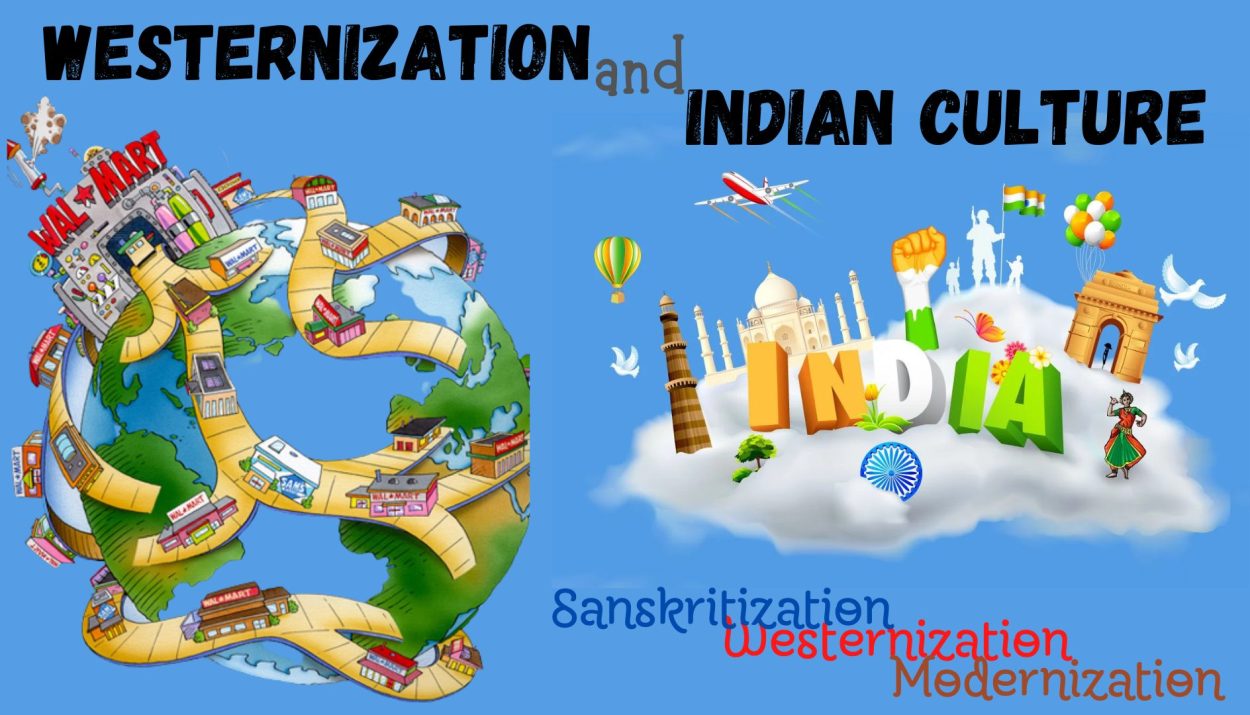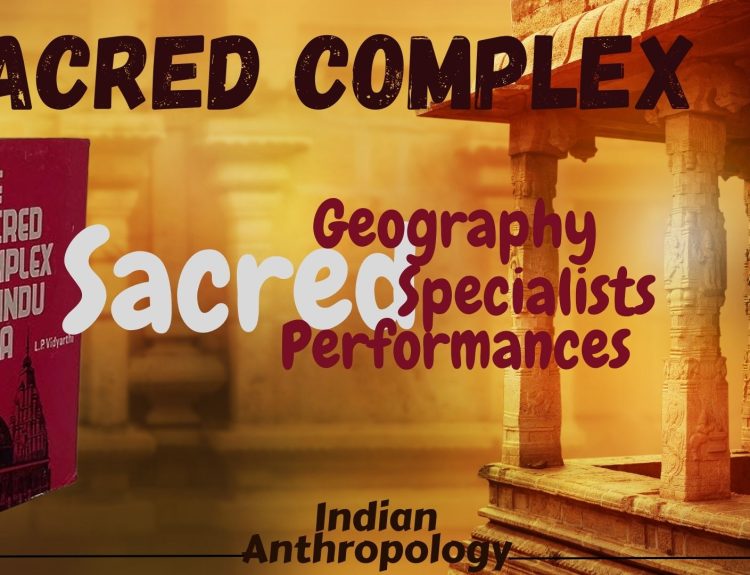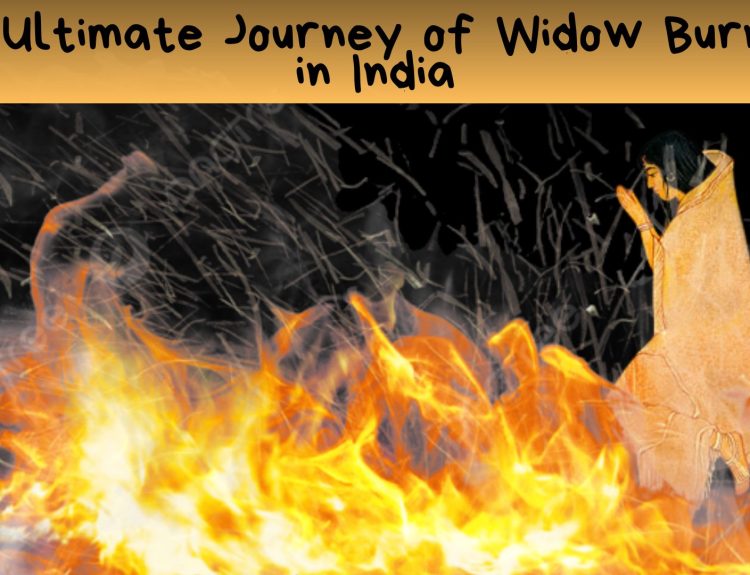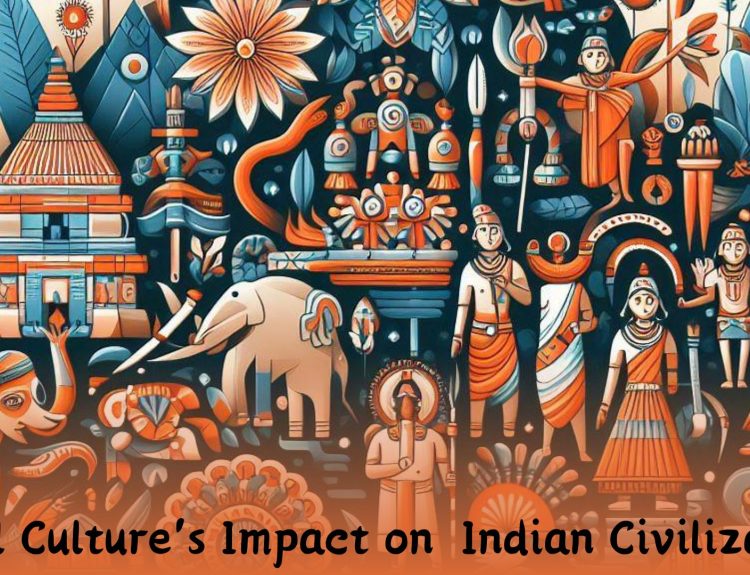The concept of Westernization is given by M.N. Srinivas. He defined Westernization as socio-cultural changes in India as a result of contact with western society, especially the British. Broadly speaking westernization is taking up the western cultures i.e. European or American cultures. Cultures like clothes, food, etc. For example, the spreading of McDonald’s restaurants across Asian cities is westernization.

Such changes took place in the Indian culture and society due to the British rule of more than 150 years. The by-products of westernization are scientific development, technological advancement, the establishment of educational institutions, the rise of nationalism etc.
According to the Cambridge dictionary, westernization is the process of westernizing a person or a country (= causing ideas or ways of life that are common in North America and Western Europe to be more used and accepted).
According to the Merriam- Webster dictionary, westernization is the conversion to or adoption of western traditions or techniques.
Impact of westernization on Indian society
The rigidity of the caste system is decreasing under the influence of westernization. It dissolved the joint families and promoted several social reform movements that eradicated social evils like the Sati pratha and Untouchability.
It affects the economic and political system of a nation. It has destroyed cottage industries and introduced new land reform measures. It has promoted democratic values and ideals, the growth of nationalism, freedom, equality, liberty and social justice. It brings changes in food habits and eating patterns, clothing sense, marriage, family, the status of women, art and literature, religion, festivals etc.
Westernization and Sanskritization
Westernization is the twin concept of Sanskritization. Both concepts work simultaneously. In some cases, westernization accelerates the process of Sanskritization. For example- the development of railways, postal communication, newspaper etc. has made it easier to communicate between different caste strata.
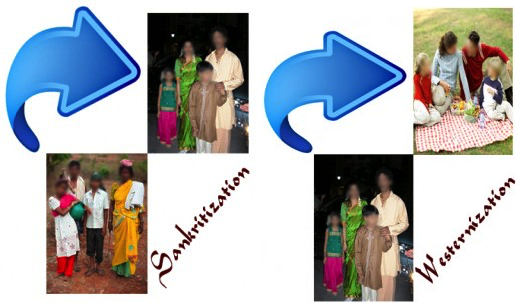
To understand the concept of Sanskritization, visit the link- https://www.anthromania.com/2021/06/27/sanskritization-never-forget-the-roots/
Under the influence of westernization, many upper-caste people abandoned their traditional lifestyle. They adopt the western model leaving behind their way of living. This is the reason why the lower caste adopts the lifestyle of the upper caste to fill this vacuum. Thus westernization and Sanskritization go together.
There are also some cases where the lower caste directly adopts westernization. Thus we find an important interaction between the concepts of westernization and Sanskritization.
Westernization and Modernization
In social theory, modernization is the idea that societies move from pre-modern or traditional into modern or even post-modern societies. Here small communities are based on social connections between individuals into more complex and big societies based on complex relationships between one another. It implies that the change from pre-modern to modern is a natural progression and all societies are on this progression.
According to the Cambridge dictionary, modernization is the act of making something more modern.

It is important to differentiate between modernization and westernization because for a long time we have culturally used these terms interchangeably. But from an anthropological point of view, the two are quite different. The two are often closely related.
Modernization brings about changes in thoughts, living habits etc. It develops the technology, infrastructure and culture of a society. Westernization is the adoption of Western culture in non-Western nations.
Modernization comes from knowledge and westernization comes from the adoption of practices followed in other countries. Modernization is the adoption of technology without bringing any change in traditional ideas and values. On the other hand, westernization means not only adopting technology but also adopting the values or ideas of western countries.
There exists a fine line between westernization and modernization. Westernization can happen without modernization and vice versa.
Conclusion
The form and speed of the Westernization process vary from place to place and from population to population. The process is not uniform all over the world. It is an uneven process. Westernization has both positive as well as negative effects. Westernization has been part of the process of modernization.
Society keeps on changing under the influence of Sanskritization, westernization and modernization.
Suggestions and criticism for the above-mentioned article are always welcomed.
References
Book- Indian Anthropology by Nadeem Hasnain
Westernization-Features and Impact on Indian Society


